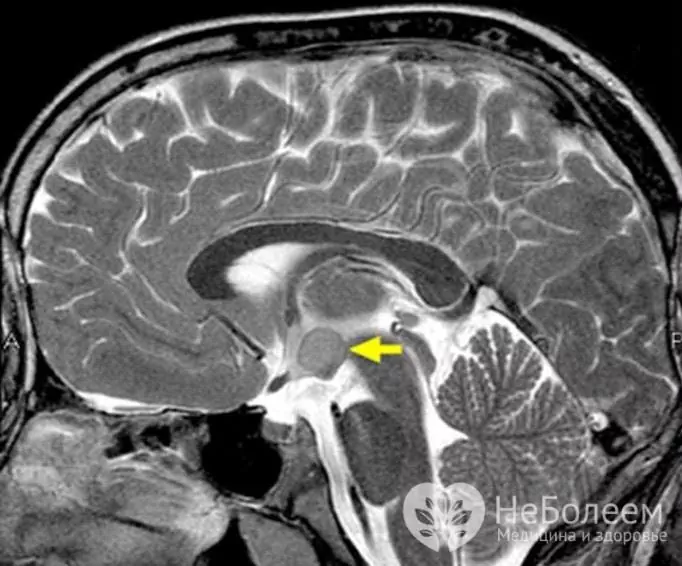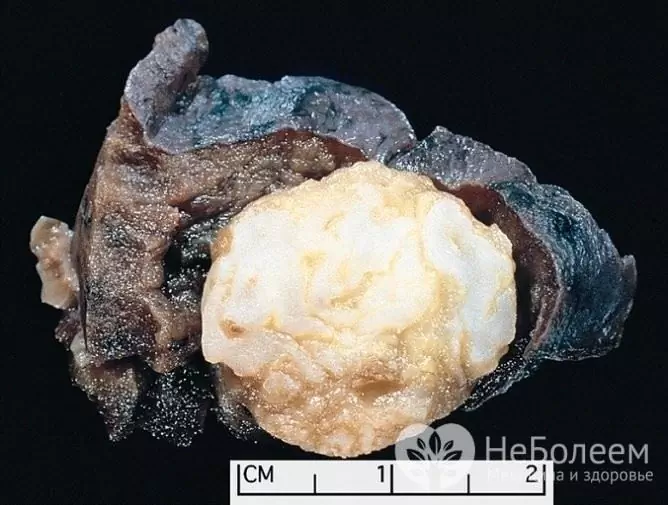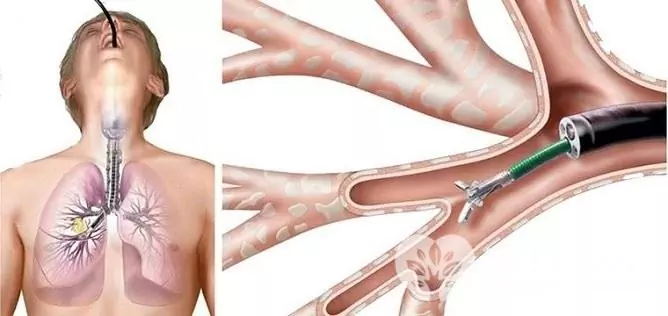- Author Rachel Wainwright [email protected].
- Public 2023-12-15 07:39.
- Last modified 2025-11-02 20:14.
Hamartoma
The content of the article:
- Causes and risk factors
- Forms of the disease
- Symptoms
- Diagnostics
- Treatment
- Possible complications and consequences
- Forecast
Hamartoma is a benign volumetric neoplasm, consisting, as a rule, of the same cells as the organ in which it is localized, but having a different structure and a lower level of differentiation.
The term was introduced into use by the German pathologist E. Albrecht in 1904.
Hamartoma is usually diagnosed at the age of 20-40, more often in men. It is a rounded dense formation with a smooth or bumpy surface, located in the thickness of the organ or facing into its lumen, ranging in size from a few millimeters to several centimeters. As a rule, hamartomas are single, although cases of multiple formations have been described.

Hamartoma of the hypothalamus on an MRI scan
Causes and risk factors
The main cause of the disease is considered to be a violation of the growth and division of cells of any organ (more often - the cessation of cell growth) at the stage of its formation in the embryonic period. Later, spontaneously or under the influence of internal and external provoking factors, the growth of cells of the organ concerned begins. Sometimes hamartoma progresses slowly from the moment the baby is born, but uncontrolled rapid growth is not typical for it.
There is a theory about the genetic predetermination of the disease (inheritance according to the autosomal dominant type), although the catalysts for the failure of tissue formation in embryogenesis and the factors provoking the growth of hamartoma have not been reliably identified.
Forms of the disease
By the name of the predominant cells, hamartomas are:
- chondromatous;
- vascular;
- lipomatous;
- fibromatous;
- mesenchymal; etc.
If the neoplasm is represented by several types of cells, they speak of an organoid hamartoma.

Hamartoma of the lung
Depending on the localization of the process in a particular organ, a hamartoma of the lung, spleen, skin, liver, hypothalamus, mammary glands, and brain is isolated.
Symptoms
Hamartoma is characterized by an asymptomatic course; signs of the disease appear only when healthy tissues of an organ are squeezed by a volumetric neoplasm or a malfunction of the affected organ with a specific localization of the process. It:
- cough, shortness of breath, chest pain, sometimes episodes of hemoptysis - when the process is localized in the lungs;
- impaired ventilation of the lungs - with bronchial hamartoma;
- epileptic seizures, headaches, loss of consciousness, behavioral changes, failures of neuroendocrine regulation - with hamartoma of the brain or hypothalamus;
- heaviness in the right hypochondrium - with hepatic localization; etc.

Hamartoma of the brain or hypothalamus is accompanied by headaches and loss of consciousness
Diagnostics
Laboratory methods cannot diagnose the disease.
It is possible to reliably confirm the presence of hamartoma when carrying out the following instrumental studies:
- ultrasound examination of the abdominal organs, mammary glands;
- X-ray examination of the lungs;
- computed or magnetic resonance imaging;
- bronchoscopy.

Bronchoscopy is performed to diagnose lung hamartoma
When performing an endoscopic examination, a biopsy is performed, followed by a histological examination of the biopsy to exclude a malignant process.
Treatment
Treatment of hamartoma consists in surgical excision of the formation by open or minimally invasive access (endoscopic) - depending on the size and location of the neoplasm.
Possible complications and consequences
Hamartomas are not prone to rapid uncontrolled growth; malignant transformation into hamartoblastomas occurs in less than 1% of cases.
The possibility of complications of hamartoma depends on the location and volume of the formation: complications develop as a result of compression and displacement of nearby tissues.
Forecast
With timely treatment, the prognosis is favorable.
YouTube video related to the article:

Olesya Smolnyakova Therapy, clinical pharmacology and pharmacotherapy About the author
Education: higher, 2004 (GOU VPO "Kursk State Medical University"), specialty "General Medicine", qualification "Doctor". 2008-2012 - Postgraduate student of the Department of Clinical Pharmacology, KSMU, Candidate of Medical Sciences (2013, specialty "Pharmacology, Clinical Pharmacology"). 2014-2015 - professional retraining, specialty "Management in education", FSBEI HPE "KSU".
The information is generalized and provided for informational purposes only. At the first sign of illness, see your doctor. Self-medication is hazardous to health!






